The practice of groupcore
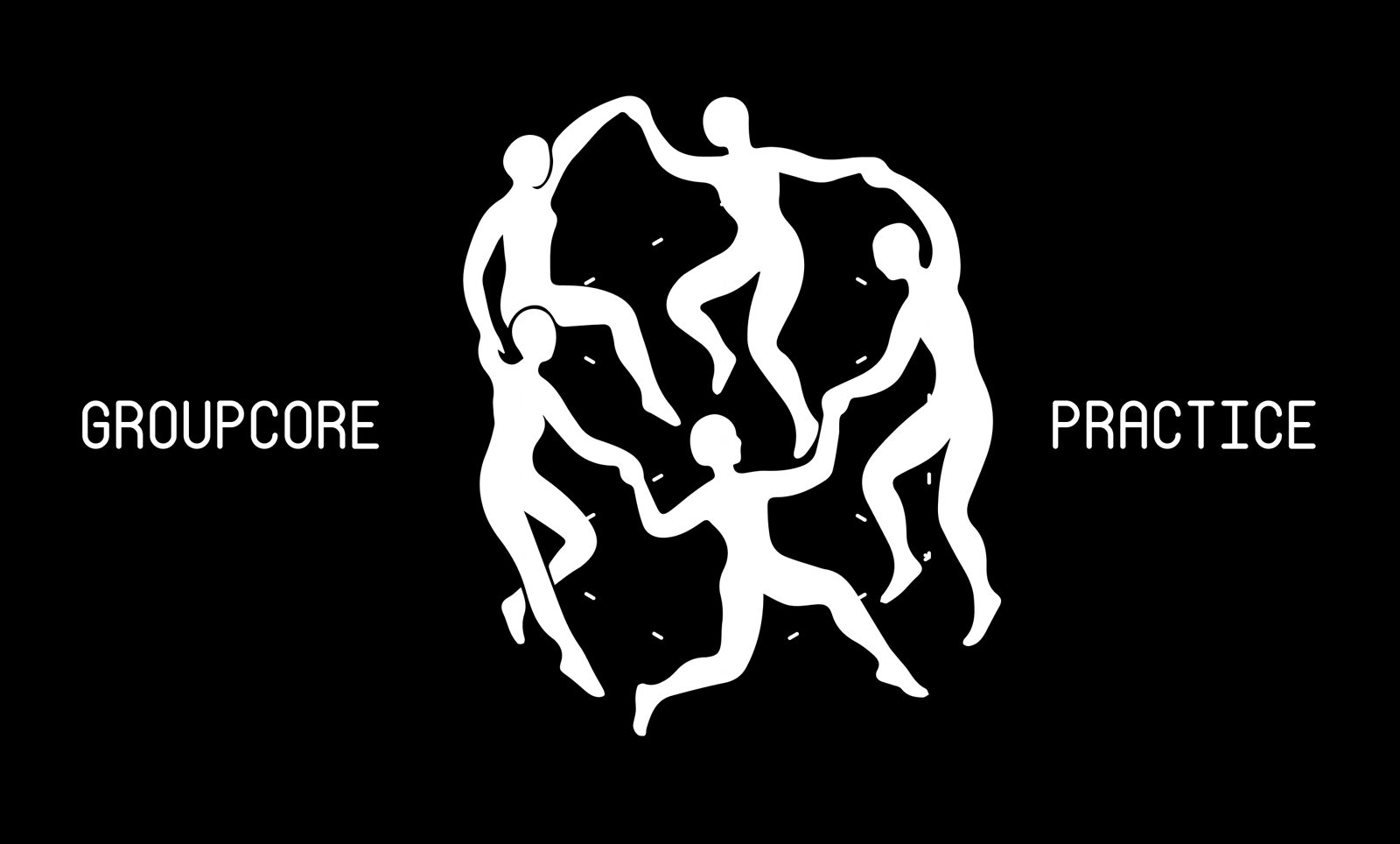
In a previous post, I introduced a theory of groupcore. This post looks at groupcore in practice.
For the past four years, Metalabel has been an exploration and manifestation of groupcore ideals. We initially called these structures “culture labels” and “metalabels” – psychic infrastructure that allows groups of people to cooperate in creative fields.
We operate as such a group, releasing work by ourselves and others that reflects our vision of a more cooperative creative universe. We've put out 21 releases to date.
How Metalabel works together
From the beginning we adopted the working structure of a heterarchy — a fluid hierarchy where a different person is empowered to make a final decision based on the area of expertise. Each person has a domain in which they're expected to act and make calls as they see fit, and as it coheres to the larger vision of that project.
A heterarchy is a high-trust structure that relies on rapid decision-making, low egos, and comfort with a fluid approach. There are times in our history we've been more hierarchical, which tended to coincide with times of struggle (competing ideas, unsuitable processes for who we are, things not working well). Our best moments have come when we’ve honored this way of working.
Metalabel’s groupcore basics
Our current core team:
- Yancey: Director, vision, writing
- Ilya: Creative Director, product designer
- Brandon: Architect, developer
- Lena: Operations, finance, creative direction
Here we are as four distinct nodes in the universe:
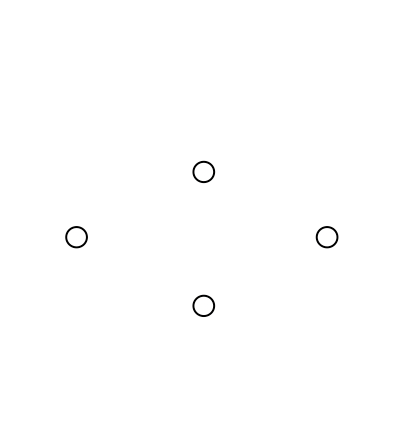
Our basics:
- Purpose. To make it as easy for creative people to cooperate as it is to compete.
- People. Four core members plus a wider network of contributors, allies, and past collaborators.
- Responsibilities. Build, creative, curation, operations, vision
- Outcomes. Distinct standalone releases and ongoing lines of business
Our stack:
- Chat: Slack, DFOS
- Brain: Notion/Metablogs
- Funding: Investment, revenue, grants
- Language: Metalabels, metablogs, Artist Corporations, groupcore, our zines, and podcast
Our organizational approach:
- Decisions. Make as few decisions as possible. Strive to operate in a flow state where one project leads to the next. Make work more stream-of-consciousness than premeditated. When we do have to decide, it’s mostly about project identity (does it live under Metalabel or as its own thing?) and team make-up (constantly evolving). If we’re forced to choose between paths A or B, it means something upstream has gone wrong.
- Proposals. Early on with a larger team, we experimented with formal proposal processes to navigate how to use our resources. Now we focus on fewer projects, all running in a kind of isolation. To preserve ideas, we created Metablogs, a shared brainspace where we build on each other’s learnings.
- Consent. The more decision-making you need to do, the greater the challenges. As a larger team, consent — both the macro-consent of overall direction and the micro-consent of every small choice — is a big concern. A smaller, trusted core reduces the need to constantly seek permission.
- Norms. Over time we’ve developed a set of norms that have served us well, like release culture, metablogs, and egalitarian pay and equity. These norms help us limit process and reinforce who we are.
Metalabel the lattice
Groupcore is not a skyscraper but a lattice. Metalabel's projects show one way this can look.
In this diagram, the center node is Metalabel Studio – the core group and heterarchy where decisions are made, ideas are shaped, and responsibility is ultimately held.
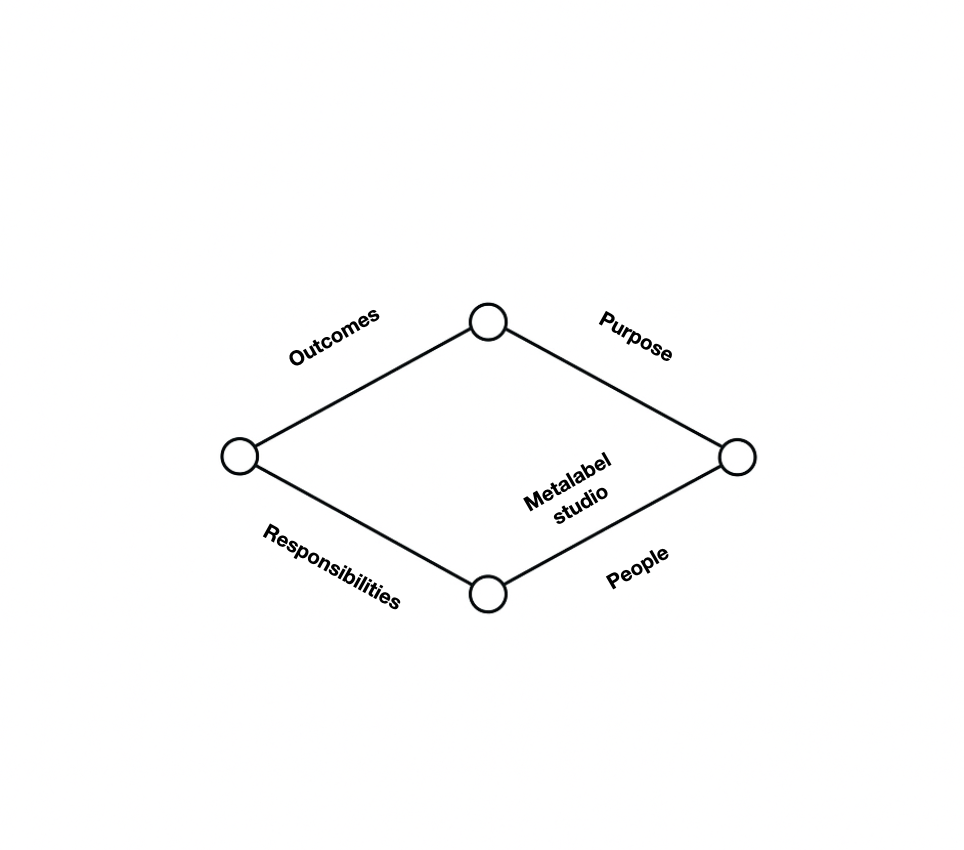
At the bottom, two nodes anchor the structure:
- People. The four of us at the core plus our wider network of contributors, allies, and our past collaborators.
- Responsibilities. The shared work each of us holds in our domains.
When this base combines with our purpose and outcomes, it results in the releases that express our work.
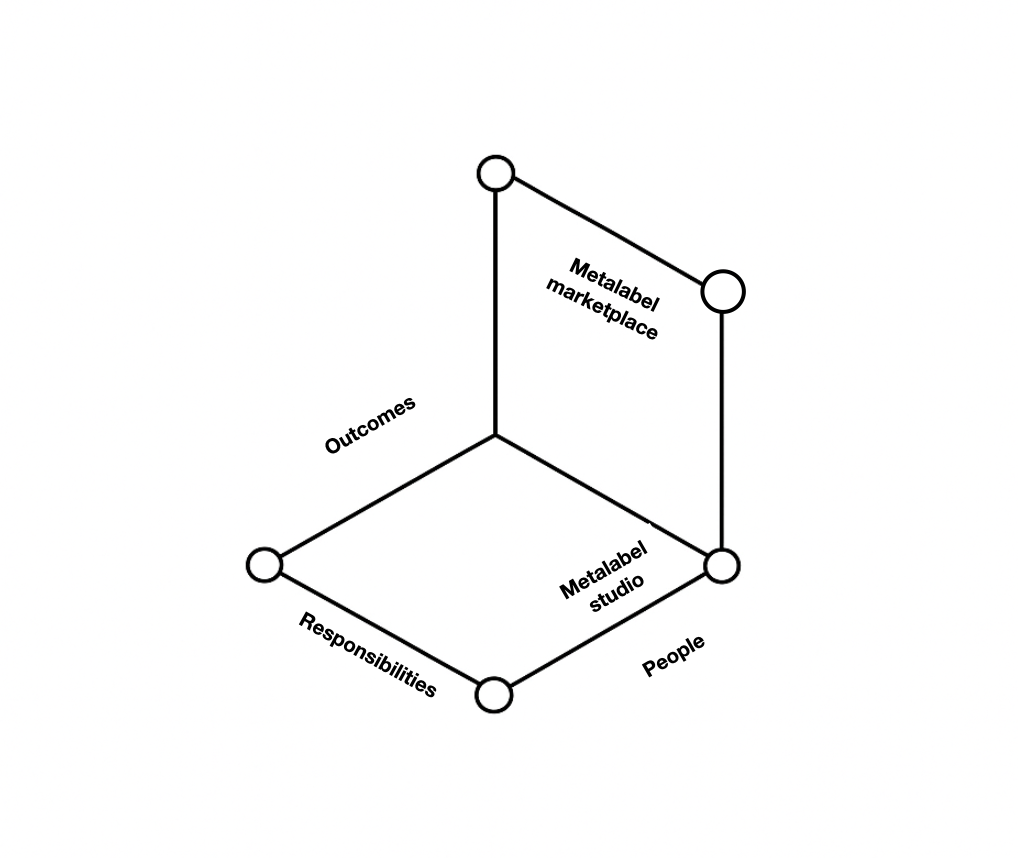
One of the most significant is the Metalabel marketplace — infrastructure and space for cooperative releases. This is where most people first encounter us. We spent two years building its architecture, product, and community. Today the work is managed by a smaller subsection of our team focused on curation and customer support. 30,000+ collectors, 1,000+ creators, and nearly $2 million in transactions have moved through this over the past three years.

One group releasing on Metalabel is the Dark Forest Collective, a writer group that uses our tools to release books and experiment with shared finances and treasuries. We started and continue to organize this project, which has put out three books so far.
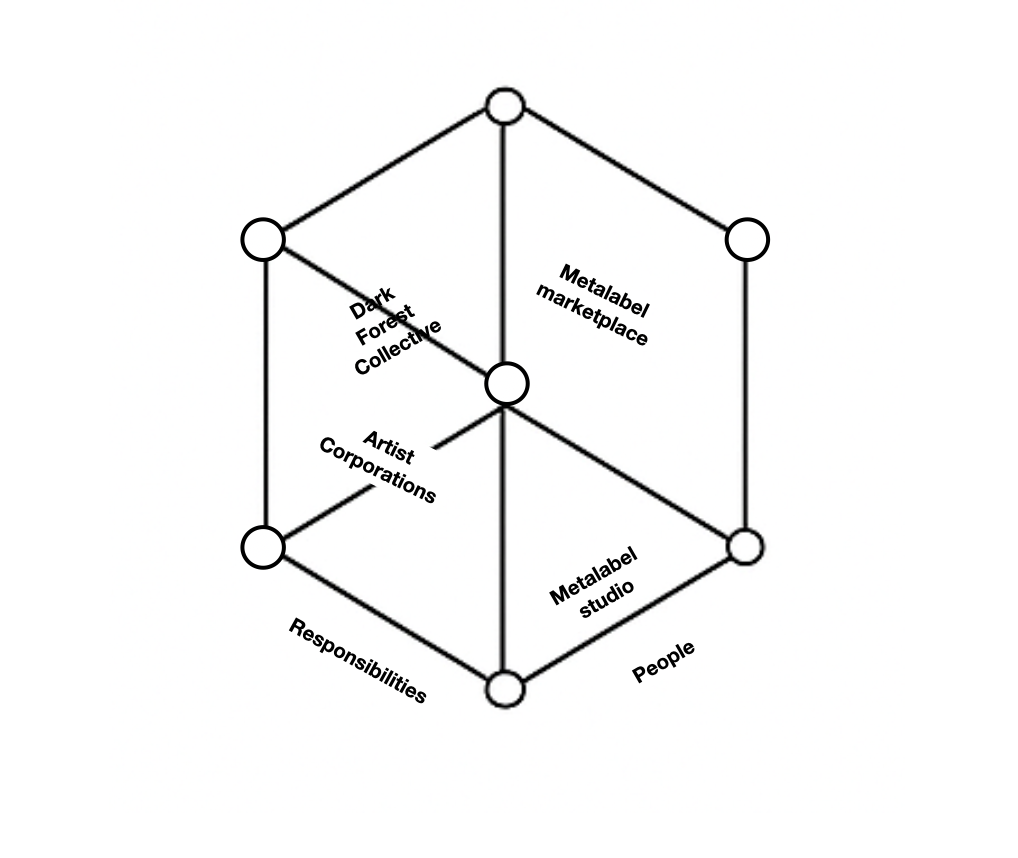
Our experiences with the Dark Forest Collective led to Artist Corporations. This is a proposed legal structure for artists and creative people that reflects groupcore values. This started as a single, one-off release, but the project is growing into a separate institution and team from Metalabel, with two of us steering it as it begins its mission.
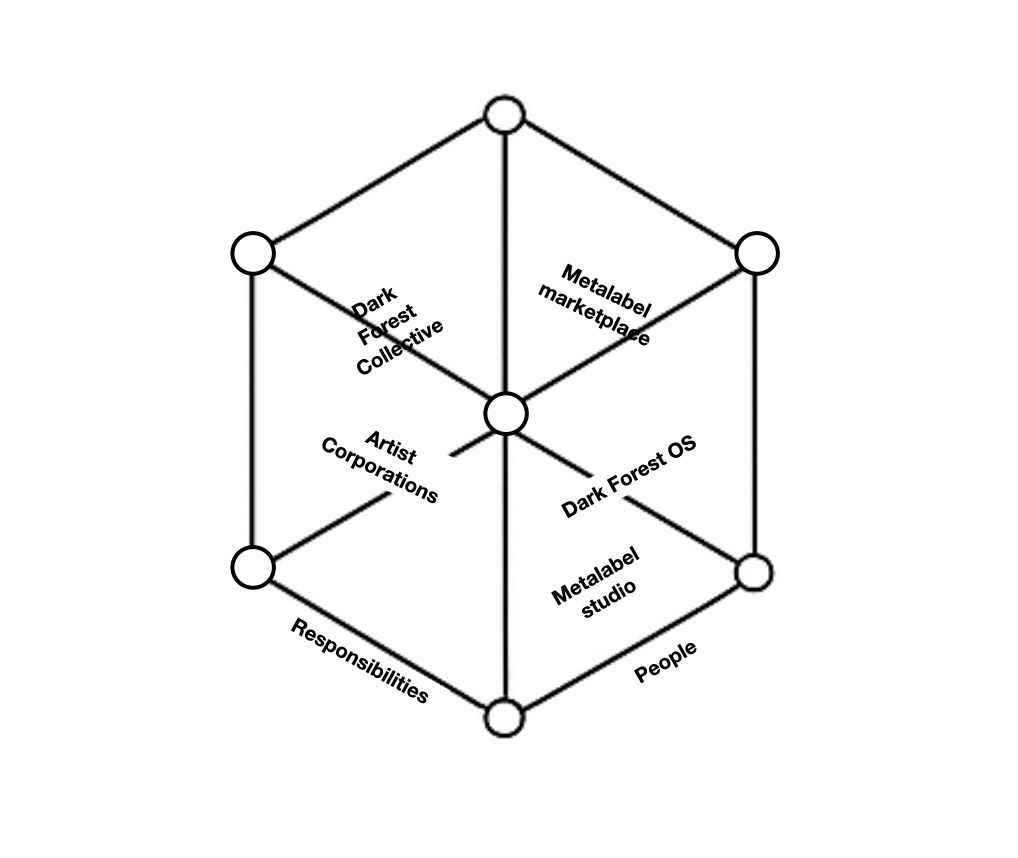
Our other focus, the Dark Forest OS, is a software project that encodes groupcore patterns into a product that anyone in this lattice will be able to use. From built-in metablogs to shared resources and communication channels, DFOS will offer the core groupcore stack in one tool.
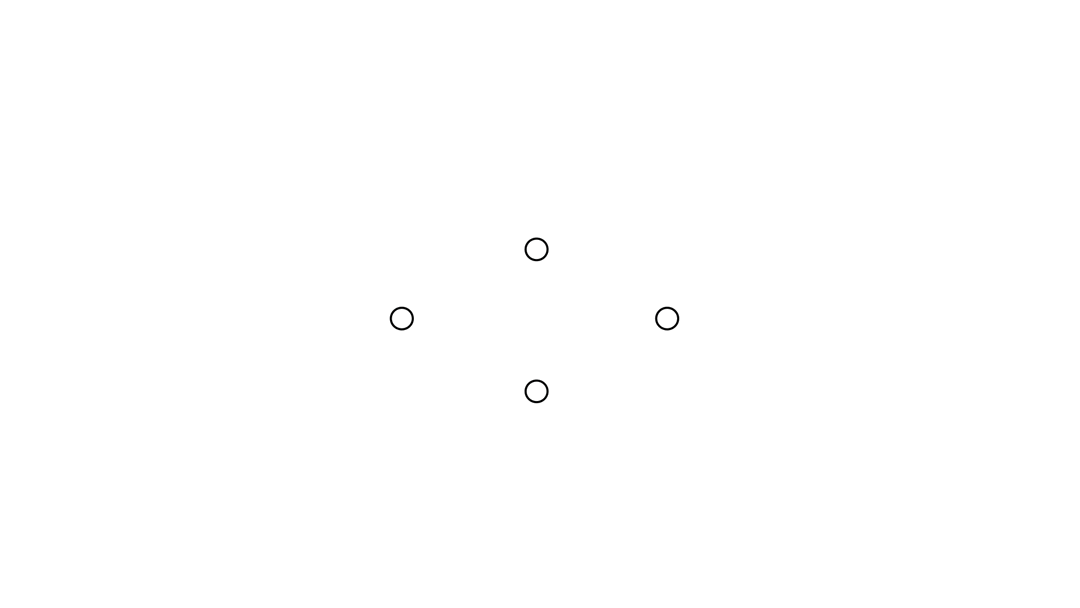
How we manage these projects
This is a lot, especially for a team of four. So how do we manage this?
- Hands-on in every role. We all perform different specific jobs. There are no managerial or purely administrative role. We use our time to focus on the direct output of the experiences we create.
- Small team plus trustworthy collaborators. We now rely on a small, trusted core (Metalabel Studio) connected to a wider ring of projects and collaborators that grows and shrinks over time.
- Keep projects distinct. The A-Corp roadmap is different than the DFOS roadmap. The Metalabel marketplace heartbeat is different than the Dark Forest Collective's. Each of us has our hands in two of these projects
- Sequential is better than simultaneous. A benefit of the release-based structure we use: we tend to go all in on a project for a set amount of time before shifting onto the new one. Even as we're managing multiple simultaneous projects now, they began at different times, require different people, and do not compete with each other for resources. Poly not mono.
- We make what we want. We project our own groupcore patterns into products and tools for others to follow or fork. We make something because we are interested in it for ourselves, then look to find ways to productize and extend it to other people. It's been an organic, fractal process.
- Everything points in the same direction. When we look at our portfolio of projects, we see the same ideas repeatedly expressed in different ways. Everything we do points to the same goals, even as the how keeps changing.
Our work is just one example. Your lattice will look different. Your stack and norms will be your own. But the pattern is the same: small, lateral, shared. As individuals our powers are limited. In groups we become stronger.
Thanks to current and past Metalabel collaborators — Rob Kalin, Ilya Yudanov, Austin Robey, Anna Bulbrook, Lauren Dorman, Brandon Valosek, Erin Rimmer, Thaniya Keereepart, Clayton Kenney, Rayna Holmes, Jack Matthews, Danielle Paterson, and many more — for being part of this collective exploration.





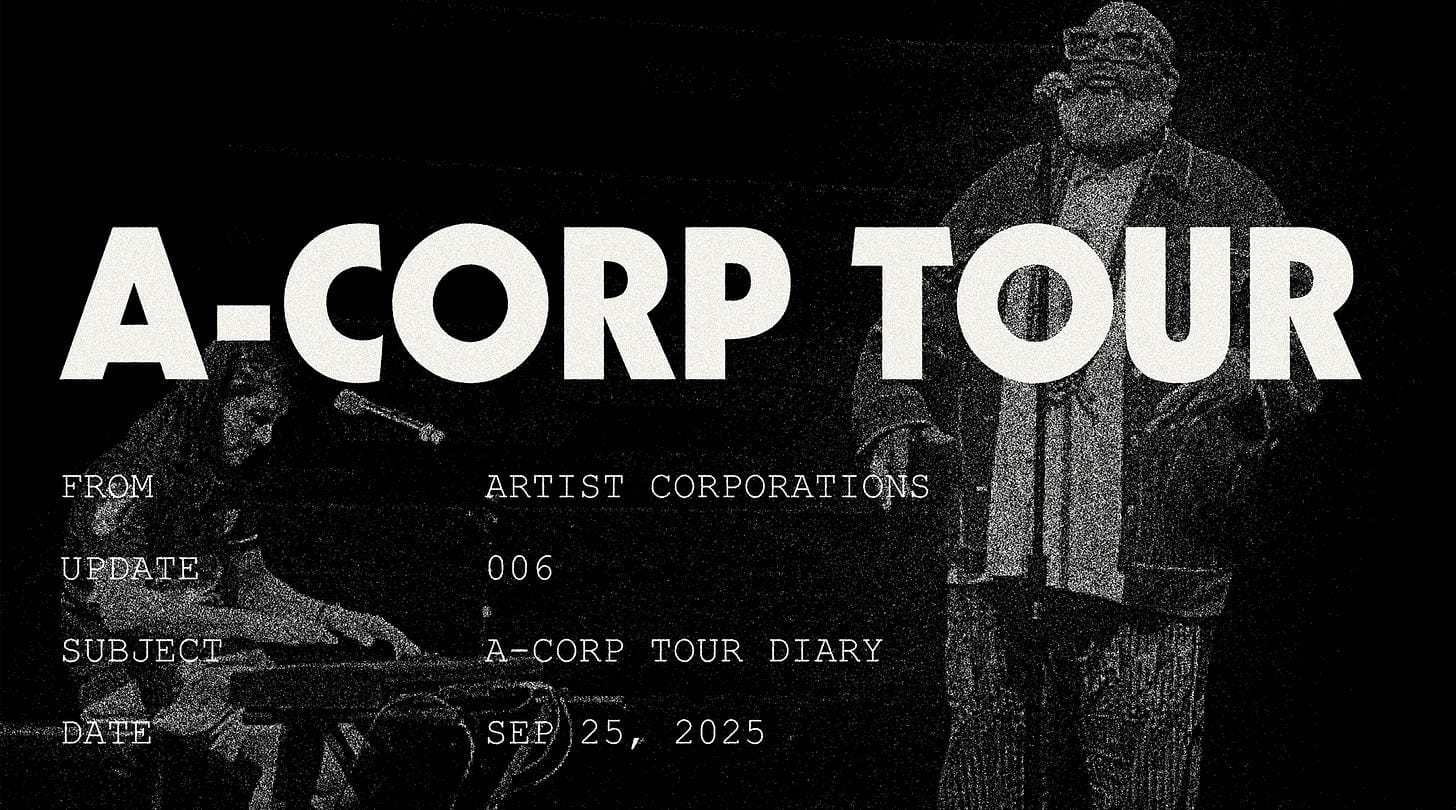
Member discussion